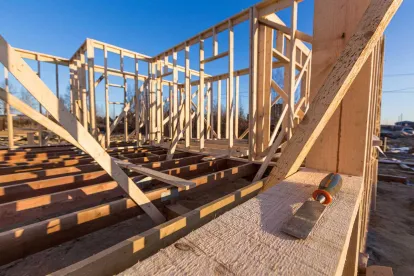Last week the Office of the Attorney General demonstrated the State of California’s unwillingness to cede its enforcement of state housing laws even in the face of defiance from local governments. On April 10, in People of California v. City of Huntington Beach (OCSC, Case No. 30-2023-01312235-CU-WM-CJC), Attorney General Rob Bonta filed a Motion to Amend its Petition For Writ of Mandate and Complaint For Declaratory and Injunctive Relief (Motion to Amend), which included the proposed First Amended Petition (Amended Petition), after the City of Huntington Beach (City), again, failed to adopt its sixth cycle update to its Housing Element[1] (6th Cycle) on April 4, 2023 – more than 16 months after the statutory deadline – in violation of the state Housing Element Law (Govt Code. § 65580 et seq.).
The Amended Petition seeks: (i) an order that the City adopt a 6th Cycle determined by the California Department of Housing and Community Development (HCD) to be compliant with the Housing Element Law within 120 days; (ii) a determination that the City is not substantially compliant with Housing Element Law, and that the City’s accessory dwelling unit (ADU) and Senate Bill (SB) 9[2] project ban violated the Housing Crisis Act of 2019 (Govt. Code § 66300), the ADU law, and SB 9; (iii) an order that the City comply with the ADU laws and SB 9; and (iv) a suspension of the City’s authority to issue non-residential building permits until the City has substantially complied with the Housing Element Law.
The State originally brought suit against the City on March 8, 2023, challenging the Huntington Beach City Council’s (City Council) recent vote to “cease the processing of all applications/permits brought to the City by developers under SB 9,[3] SB 10, or ‘state law related’ ADU[4] projects until the courts have adjudicated the matter.”[5] According to the State, the City’s insolent move violated the Housing Crisis Act and the Housing Accountability Act (Govt. Code § 65589.5) (HAA).
The City’s refusal to process ADU and SB 9 permitting applications occurred subsequent to its receipt of a series of warnings issued by the HCD and the California Attorney General’s Office, urging the City against the implementation of bans on SB 9 and ADU project applications.[6] At this same time, the City introduced, but did not adopt, an additional ordinance which would have banned Builder’s Remedy[7] projects brought pursuant to the HAA.
Following the initiation of People of California v. City of Huntington Beach in March, the City resumed processing SB 9 and ADU project applications. This shift coincided with a federal district court’s denial of the City’s Ex Parte Application for a Temporary Restraining Order Or A Preliminary Injunction (TRO). In City of Huntington Beach et al v. Gavin Newsom et al. (USDC Central Dist., Case No. 8:23-cv-00421-FWS-ADS), the City sued California Governor Gavin Newsom, HCD and its Director Gustavo Velasquez, and the California State Legislature for allegedly violating a variety of rights under the U.S. Constitution and California Constitution, violating the California Environmental Quality Act and committing fraud by virtue of the State’s housing laws, which the City characterized as “tyrannical.” The City then filed a TRO to restrain the State from enforcing any of the fines or penalties enumerated under the Housing Element Law and HAA, which they alleged included: (1) loss of permitting authority; (2) the Builder’s Remedy; (3) the People of California v. City of Huntington Beach lawsuit seeking to force the City to comply with the Regional Housing Needs Allocation (RHNA) numbers; (4) court receivership; and (5) other fines and penalties. The Court denied the City’s TRO because it failed to establish a likelihood of success and did not sufficiently address threshold questions as to whether the court could even reach the merits of the claims.
While litigation in state and federal courts may have spurred the City to resume processing SB 9 and ADU project applications, it did not change the City’s position regarding whether it was required to adopt a substantially compliant 6th Cycle. The City’s statutory deadline for adopting a 6th Cycle expired October 15, 2021. According to the State, the City staff and HCD had previously convened to discuss changes the City needed to make to the draft 6th Cycle on several occasions; however, the City Council failed to pass the necessary resolutions to approve. After the City Council’s most recent failure to approve on April 4, 2023, the City made no further attempts to adopt a compliant 6th Cycle, directly resulting in the State’s decision to file the Motion to Amend. The Amended Petition’s causes of action now focus on enforcement of the Housing Element Law, while still seeking a declaration that the City’s ban on ADU and SB 9 projects – while no longer in effect – conflicted with State law, and the City must comply.
Decisions in this case could have far reaching implications as to how cities across California weigh the costs and benefits of implementing a compliant 6th Cycle. Per the HCD’s website, approximately 42.9% of all jurisdictions within California are out of compliance with the Housing Element Law and, therefore, could ostensibly be sued by the State (like the City was), should they fail to adopt a compliant 6th Cycle or subsequent cycle update.[8] Should the courts not recognize the State’s preemption and not to hold the City accountable for its insubordination of the Housing Element Law, it would deliver a massive blow to California’s housing agenda by severely weakening the State’s ability to enforce its own laws.
Looming in the background; however, are additional tools such as the Builder’s Remedy and Assembly Bill (AB) 1398, which may incentivize non-compliant cities to pursue a compliant 6th Cycle, and may also serve as procedural tools to create much needed leverage for property developers in inhospitable, non-compliant jurisdictions.
Builder’s Remedy is a part of the HAA.[9] Generally, the HAA limits a local government’s authority to deny, make infeasible or reduce the density of housing development projects. However, the “Builder’s Remedy” provision in the HAA imposes further limitations on local governments that are deemed noncompliant with their state-mandated housing plans. Under this remedy, the local government loses the ability to approve or deny projects with affordable housing components, even if inconsistent with existing zoning or General Plan land use designations – and those projects, instead, are approved by-right projects unless very specific findings can be made. Not surprisingly, the City introduced an ordinance which will ban Builder’s Remedy projects. However, it has yet to adopt the ordinance. Despite being approved by the State Legislature in 1990, Builder’s Remedy remains judicially untested.
AB 1398 similarly kicks-in if a local government fails to adopt a compliant 6th Cycle (or subsequent cycle) under the Housing Element Law. More specifically, should the local government fail to adopt a Housing Element update that the HCD has found to be in substantial compliance with state law within 120 days of the statutory deadline, AB 1398 requires the local government to complete the rezoning of sites identified in the housing element update no later than 1 year from the statutory deadline for the adoption of the housing element. AB 1398 prohibits a jurisdiction that adopts a housing element update more than 1 year after the statutory deadline from being found in substantial compliance, as described above, until “all required rezoning is complete,” as specified.[10] Similar to Builder’s Remedy, AB 1398 is judicially untested.
As such, this case will bring much needed legal interpretation to the state housing law space, in which many of the enforcement and remedial provisions have yet to be tested. Moreover, it will measure the strength with which the State is able to enforce its housing laws and push local governments toward compliance. We will continue to monitor this case and provide updates as they become available.
FOOTNOTES
[1] Under the Housing Element Law, local governments are required to plan for growth through the RHNA process, which sets baselines for housing production to accommodate factors such as births, immigration and jobs, through statutorily mandated updates to the Housing Element in the jurisdiction’s General Plan.
[2] A discussion on SB 9 can be found here.
[3] SB 9 streamlines the process for creating duplexes and/or for subdividing existing lots, and limits a local agency’s ability to deny a compliant project.
[4] Govt. Code § 65850 requires local agencies to administratively review ADU applications within 60 days of submission.
[5] Huntington Beach City Council, February 21, 2023, Action Item No. 23-172.
[6] California Attorney General Bonta and Department of Housing and Community Development Again Put City of Huntington Beach on Notice for Potentially Violating Multiple Housing Laws, February 21, 2023.
[7] A discussion on Builder’s Remedy projects can be found here.




 />i
/>i

